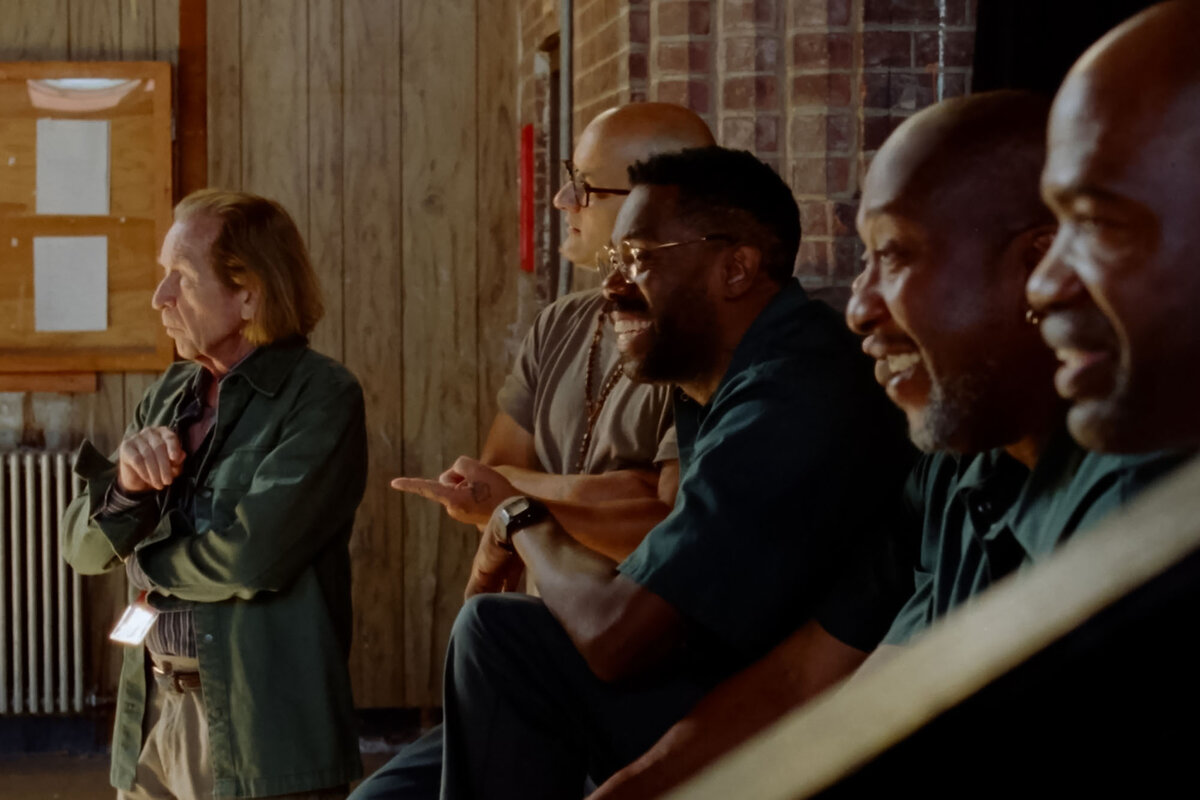‘Sing Sing’: How one prison performance changed lives
Loading...
The world’s most unpredictable play only had one performance. It was staged inside a prison. The comedy, “Breakin’ the Mummy’s Code,” is about a man from ancient Egypt who embarks on a time travel adventure. Along the way, he encounters Robin Hood, Roman gladiators, cowboys, Hamlet, pirates, and – because why not? – Freddy Krueger from “The Nightmare on Elm Street.” It included a Shakespeare soliloquy – plus dance numbers.
“Breakin’ the Mummy’s Code” was created by incarcerated men inside Sing Sing Correctional Facility in New York. It received a standing ovation in Cellblock B. Now, a new movie explores the play’s legacy: the healing effect it had on its participants.
“Sing Sing,” directed by Greg Kwedar, reenacts the making of “Breakin’ the Mummy’s Code.” It even stars one of the play’s original actors. Already generating Oscar buzz, the movie, which rolls out in theaters starting July 12, chronicles a budding friendship between two incarcerated men. Thematically, it’s about identity. The characters live in a hypermasculine environment that venerates bravado, toughness, and aggression. But the amateur actors come to discover that empathy, vulnerability, and tenderness are strengths, not weaknesses. The movie makes a case for the rehabilitative impact of arts programs inside prisons.
Why We Wrote This
A story focused onTo show the power of the arts to change lives, a director re-created a play that ran for one performance in prison. He wanted to film in a way that gave formerly incarcerated men ownership of their own story.
“I was a witness to it,” says Mr. Kwedar, who taught an acting class in a prison with his creative partner, Clint Bentley, as part of their research. “I think the greatest teacher is what it’s like to step into another character and move in their shoes and step outside of yourself. That is a process of empathy. ... It gives you a prism to look at all the relationships in your life and to see perspective.”
“Sing Sing” is Mr. Kwedar’s second movie. His debut, “Transpecos,” a thriller about Border Patrol agents, received rave reviews in 2016. He then spent seven years developing “Sing Sing” with Rehabilitation Through the Arts (RTA), the nonprofit that runs the theater program.
There are dozens of similar theater projects across the United States. Perhaps the most well-known is Shakespeare Behind Bars. That program, which operates in three prisons in Kentucky and in one in Michigan, boasts a 6% recidivism rate for those who have participated in its productions. The Monitor was the first publication to write about that program. Then it became the subject of an award-winning 2005 documentary, “Shakespeare Behind Bars.”
“Prisons function on shame and guilt,” says Shakespeare Behind Bars founder Curt Tofteland, who has longtime collegial connections with the RTA. “But shame and guilt doesn’t change behavior. Why? Because shame and guilt doesn’t change thinking. And the only way that you change behavior is to change thinking.”
These programs don’t set out to “fix” incarcerated men. As Mr. Tofteland puts it, “I’m an artist who does work that’s therapeutic. I’m not a therapist who does work that’s artistic.”
When change does happen, it’s a result of the actors exploring questions that the scripts raise, including “Who am I?”
The two men at the heart of the story – John “Divine G” Whitfield (played by Colman Domingo) and Clarence “Divine Eye” Maclin (who portrays himself) – had to grapple with those existential questions. As the film unfolds, the audience learns that Mr. Maclin was one of the most feared men in the prison. Acting freed him to shed the gangster identity he’d clung to. The program helped him learn to express emotions. He even cried onstage. Now, he’s a natural performer on screen.
“In conversation with our cinematographer Pat Scola, the big revelation we had early on in our process was, ‘This is a movie about the landscape of the human face,’” says Mr. Kwedar. “It’s about drawing close to someone and looking them in the eyes and hearing their stories, and to know their names. And when you do that, it’s impossible to see that person as anything less than human.”
“Sing Sing” was filmed inside a recently decommissioned prison in New York. Its cast of established and first-time actors includes 13 RTA alumni. The production employed community-based filmmaking. For starters, it had a nonhierarchical pay structure. Everyone on set, including Mr. Domingo – who recently won an Emmy for the TV show “Euphoria” and was an Oscar nominee this year for “Rustin” – was paid the same rate. The cast and crew are profit participants in “Sing Sing.” It means that the formerly incarcerated men in the movie “have literal ownership over their own story,” says Mr. Kwedar.
Last month, the director screened the movie inside the Sing Sing facility itself. He calls it the most profound theatrical experience of his life. After the credits had rolled, RTA alumni got up on the stage.
They were able to “talk directly to this incarcerated audience and present a vision for them of what’s possible,” says Mr. Kwedar. “That they’re needed to be out there, making this world a better place.”







